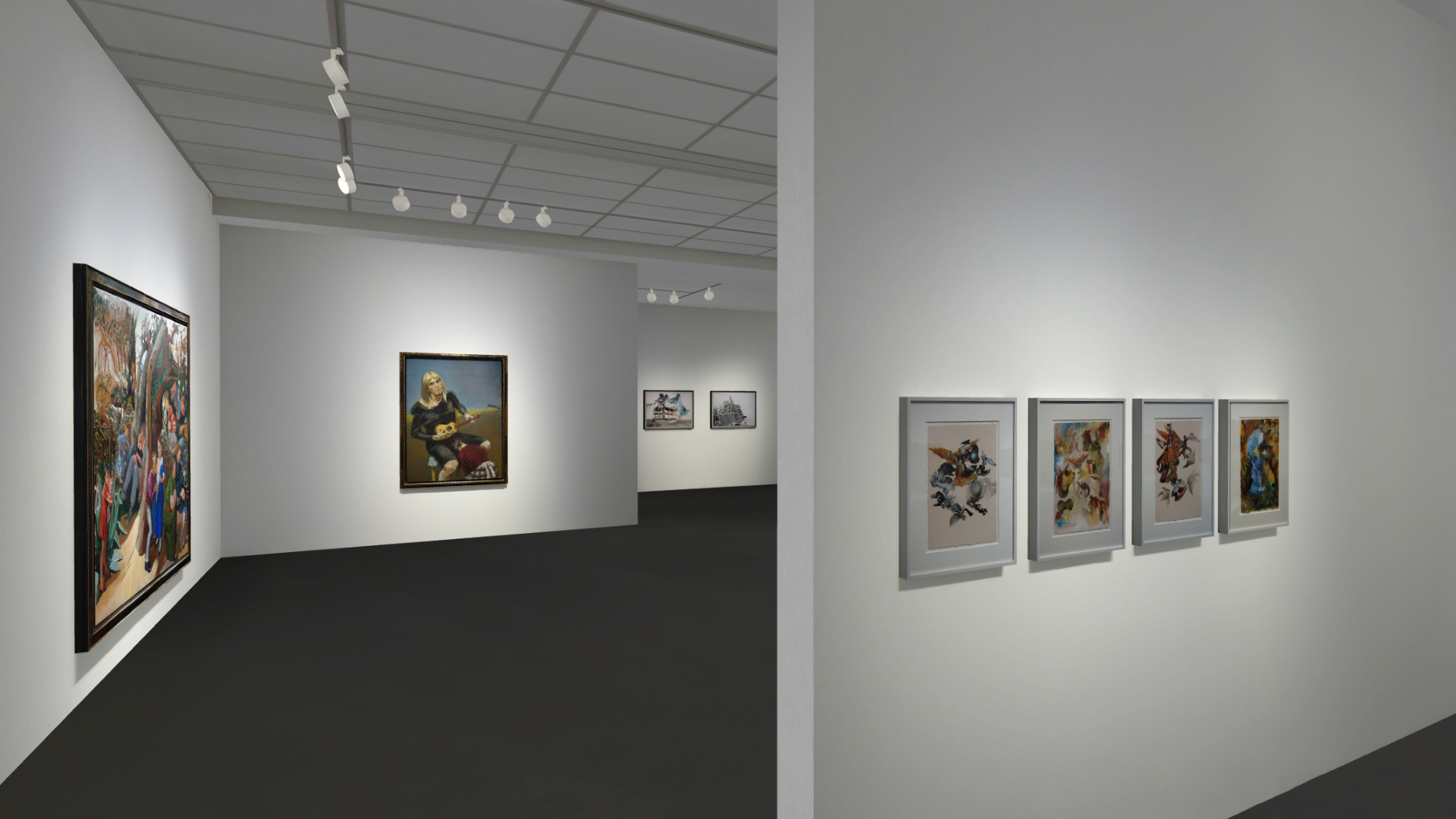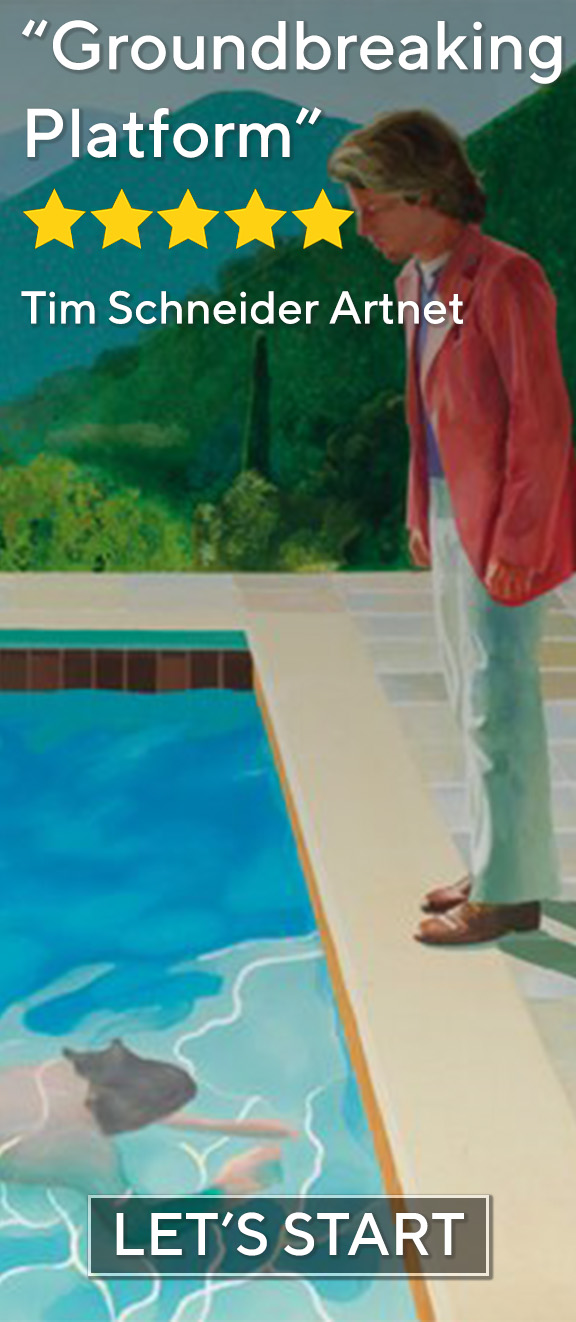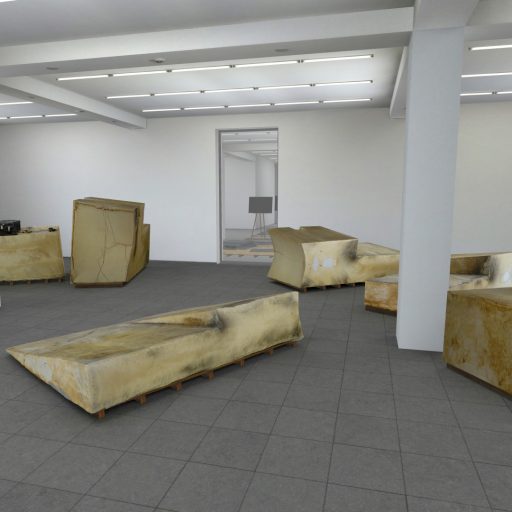

At a time when travel in real life has become fraught and the ease, even recklessness, with which we took this liberty for granted has come into question, this exhibition—its title, L’Invit... more >> Esther Schipper is pleased to present L’Invitation au voyage, an exhibition of painting on the long history of travelling in your imagination, through fantasy or dreams, and ideas of the body as site of projection, conduit and personal discovery.
At a time when travel in real life has become fraught and the ease, even recklessness, with which we took this liberty for granted has come into question, this exhibition—its title, L’Invitation au voyage is taken from a poem from Charles Baudelaire’s Les Fleurs du Mal—invokes the freedom of imaginary travel. The poem, in which the author invites his mistress to travel with him in their imagination, suggests a parallel between Flemish painting, the landscape of the Netherlands, and his lover’s body. Its famous closing lines gave the title to Henri Matisse’s 1904 painting: Là, tout n’est qu’ordre et beauté, Luxe, calme et volupté.
L’Invitation au voyage spans multiple generations and artistic approaches, inspired, influenced, and expanding on representations of dream and fantasy. Beginning with pioneering avant-gardist Hannah Höch, and established figures such as Paula Rego, Almut Heise, Leiko Ikemura, and Yeesookyung, the exhibition continues into the practices of younger generations with works by Sarah Buckner, Cui Jie, Cordula Ditz, Tala Madani, Isa Melsheimer, Sojourner Truth Parsons, Shahzia Sikander, and Tsai Yi-Ting.
Historically, the image world of dreams and fantasies has peopled heaven and hell—its mythical, religious or secular equivalents. At the beginning of the 20th century, more specifically since dreams and their interpretations became framed as scientific inquiry with the publication of Sigmund Freud’s Traumdeutung in 1900, art began to more overtly explore how daily life and nightly sleep were connected. Dreams could be experienced as liberation from the rules of law, and from time and space.
L’Invitation au voyage begins with the invocation of music, setting the mood for the soothing and troubling effects dreams can evoke: the image of a lone piano greets visitors. The notion of the uncanny is further invoked by the stillness of the mannequin in Almut Heise’s Schaufenster, which shares the first room with three works by Paula Rego. Drawing on the motif of Roman charity, Rego’s monumental Caritas from 1993 depicts highly charged scenes of parents and their children in a fantastical wooded landscape.
Travel, adventure, and the negotiation of cultural identities are the subject in a room of large-scale paintings by Leiko Ikemura, four works by Shahzia Sikander from her series Empire Follows Art: States of Agitation, and five works by Hannah Höch. Fusing figures and landscape, Ikemura’s three works, Tokaido, Tokaido, and Genesis, obliquely refer to Hiroshige’s groundbreaking series of woodblock prints capturing the journey along Japan’s Tokaido road. Sikander’s abstracted winged figures symbolize a state of struggle, of being caught variously between competing cultures and histories. Höch, who was an avid traveler, is represented by watercolors produced during trips in the pre-war years, a major painting from 1937, and a later collage, Garten from 1948. The latter two works document the artist’s turn to nature, as she was reduced to “travel in her garden” during World War II.
Sojourner Truth Parsons and Sarah Buckner present works that distill their lives into strikingly graphic and atmospheric works. Parsons paints the psychic life of the everyday and its fantasies, translating feeling and emotion through color, form and figure. The world and all its experiences—real-life encounters, the dreams that sprang from them, books, and films—functions as a poetic springboard for Buckner.
With Tsai Yi-Ting, Cordula Ditz, and Tala Madani, the fourth room brings together images of distress, obsession, and trauma. Tsai Yi-Ting’s harrowing painting draws on the trauma of childbirth, while the collaged images printed on Ditz’s paintings investigate the parallels between the Spiritualist and the early Suffragette movements in mid-19th century America. Madani’s luminous work depicts with wry humor two figures entangled in humiliation.
Cui Jie’s International Space Station then represents, together with Isa Melsheimer’s new gouaches, an element of science fiction and dystopia. Looming large above earth in a black expanse, the ISS can represent scientific cooperation but also remoteness. Melsheimer’s new works take as point of departure the rotating Villa Girasole near Verona and a striking Brutalist church in Rome, where a lone wolf devours his prey.
Yeesookyung’s work, based on narratives of past live experiences recovered under hypnosis, leaves us with an expanse of small pink flowers, a painting from the artist’s meditative, conceptual practice.
In the last year, dream and fantasy have taken on a renewed importance as liberation from the strains of the persistent uncertainty of everyday life. With their representation of dreamlike or fantastic figures, bodies, scenarios, or landscapes, L’Invitation au voyage brings together works that tear at the boundaries of reality, giving us a glimpse of worlds existing at the threshold of the real.










